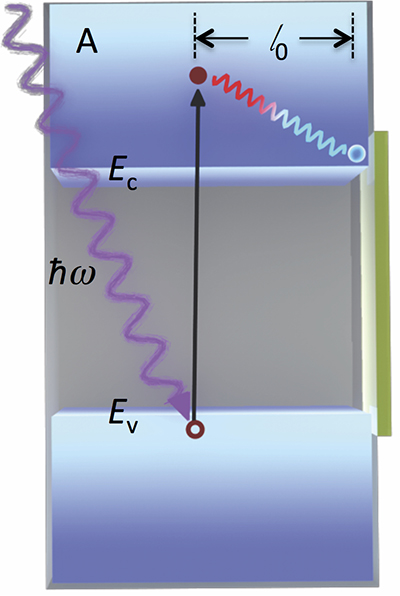Electronic properties of solids are at the heart of materials science, and the ability of materials to conduct electricity efficiently, through the free or nearly free motion of electrons, drives modern technology.

When light is applied to a ferroelectric insulator, the distance that electrons travel before they lose their excess energy is much larger than the usual hopping scale.
While ferroelectric insulators, a category of electrically insulating crystals, have many applications in modern technology, by definition, they do not permit free or nearly free motion of electrons. Instead, small current flows by the sporadic hopping of electrons through the crystal lattice. In new work, a collaborative team from Materials Professor Jonathan Spanier’s Mesoscale Materials Laboratory, the Shubnikov Institute of Crystallography, and the US Army Research Laboratory showed how light can transform a ferroelectric insulator into a high-mobility electronic conductor, remarkably, at room temperature. Their experiments reveal that the free path, the distance that hot, optically-generated electrons travel before they are scattered by vibrations of the lattice and lose their excess energy is unexpectedly large, orders of magnitude farther than the hopping scale for a usual insulator.
Ferroelectric oxides are attractive for photovoltaic solar energy. This work, “Mesoscopic free path of non thermalized photogenerated carriers in a ferroelectric insulator,” reported in Physical Review Letters, is an experimental prescription for revealing an unexpectedly long room-temperature free path of photo-generated carriers in a ferroelectric insulator, and can advance the promise of efficient bulk photovoltaic effect-based solar energy conversion.
The work was supported primarily by the U.S. Army Research Office and by the National Science Foundation.